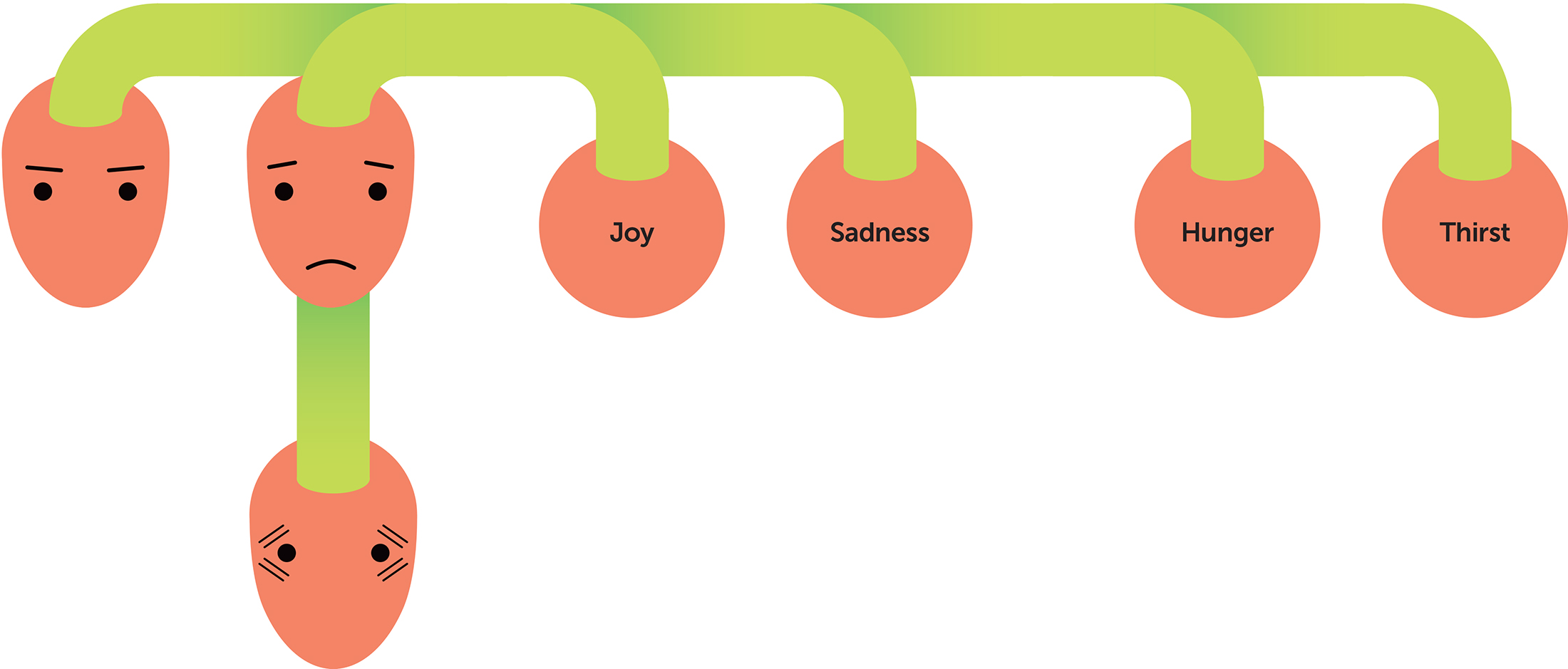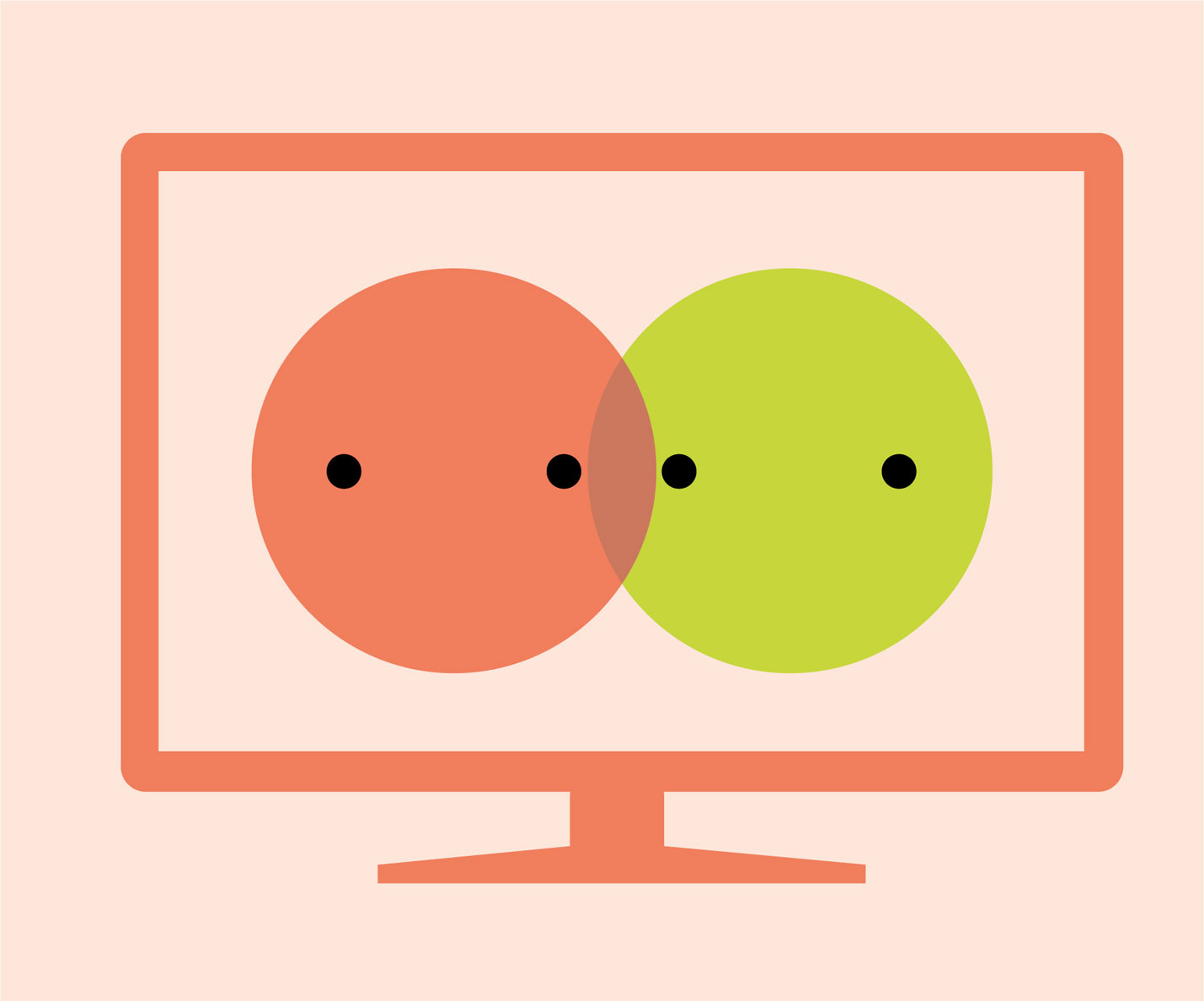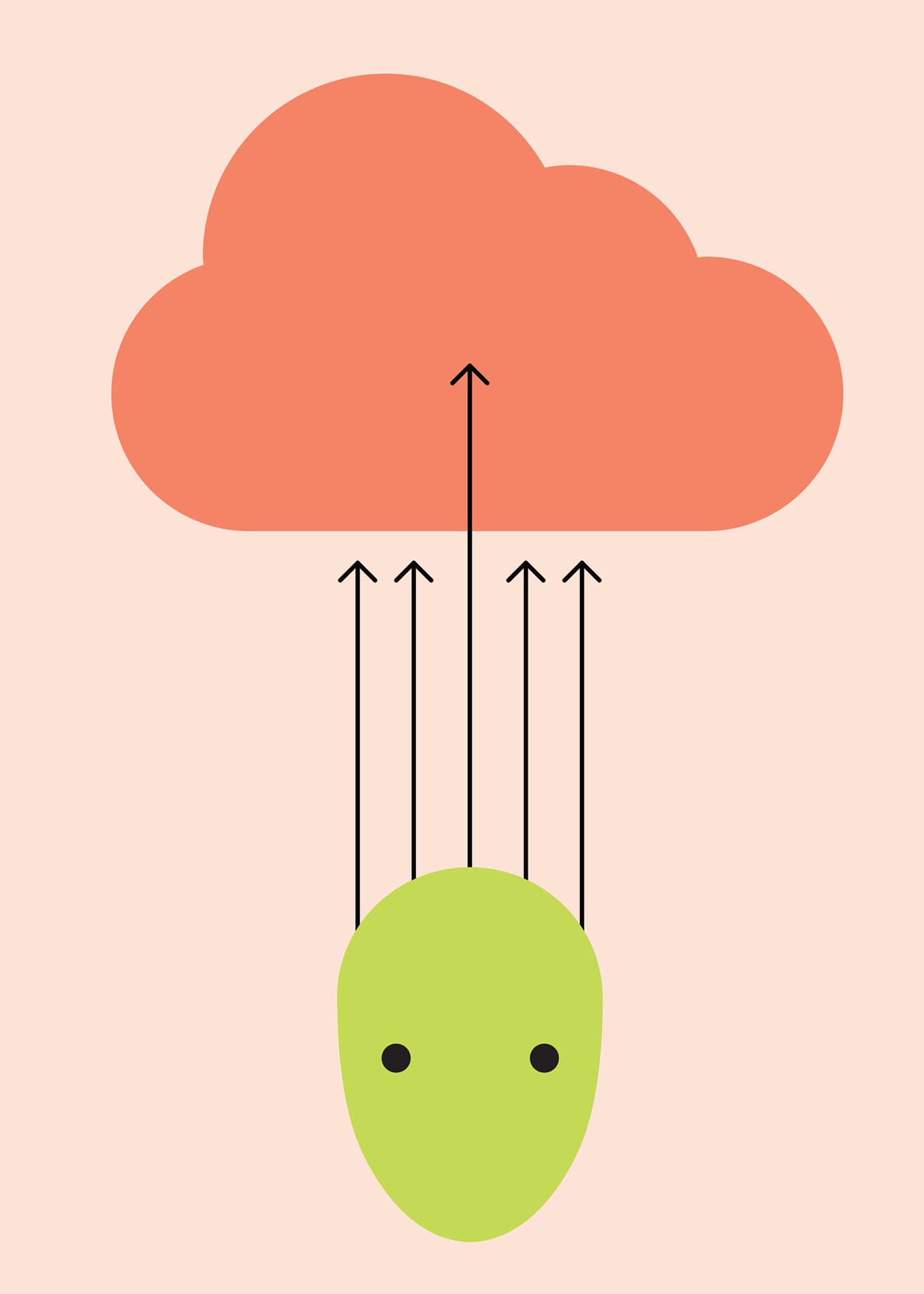
RECREATION
LESSONS
17 HORROR FILMS
Horror movies are scary, right? But the monsters aren’t real. How can we be scared of something we know doesn’t exist?
18 FINE DINING
Food critics are supposed to have better palates than the rest of us. Does that mean they can tell us what’s tasty and what’s not?
19 CREATIVE GENIUS
What’s creativity? A divine gift? A genetic disposition? A magical power? Do some people have more of it than others – and if so, why?
20 VIRTUAL LIFE
Computer games can be confusing. Sometimes they look more real than real. How worried should we be about this?
‘Progessive art can assist people to learn not only about the objective forces at work in the society in which they live, but also about the intensely social character of the interior lives.’
Angela Davis
Like the sugar from a donut, philosophy covers absolutely everything. That includes donuts. Aesthetics – the study of the nature of beauty – encompasses discussions of taste … and who, really, can discuss taste without discussing donuts? From Plato onwards, philosophers have seen art, literature, hobbies and pastimes as worthy of intellectual attention – so recreation is the focus of our final chapter.
Did A Nightmare on Elm Street leave you a gibbering wreck? Did you ever stop to wonder how you can be afraid of something when you know it isn’t actually real? In Lesson 17, we’ll examine our emotional responses to movie monsters, and the ‘paradox of fiction’. It may not stop you screaming during a screening of The Ring… but it will help you feel a little better about doing so.
Then again, maybe you don’t like to watch horror films. With their B-movie bogeymen and hackneyed tropes, horror films tend to fall within the sphere of what people call ‘low art – in contrast to the ‘high art’ of Mozart or Barbara Hepworth. Does the fact that we rank artworks mean that there’s an ‘objective standard of taste’?
Our artistic preferences may vary, but one thing most of us agree on is that good art – be it literature, video games or painting – displays creativity. We describe people as ‘creative’. That’s a good thing for an artist to be, yet it’s not immediately obvious what ‘creativity’ actually is. Thinkers like Plato and Virginia Woolf offer us answers. We’ll think creatively about creativity in Lesson 19.
In the final lesson, we’ll look at a relatively new art form: computer games. Technology is advancing at an exponential rate and virtual reality (VR) programs are raising serious questions about non-virtual reality (or as it used to be called, ‘reality’). How different are our lives from computer simulations – and what does this mean for our sense of identity? As with many of the preceding chapters, we’ll examine the idea that our belief in a single, unified self no longer seems as natural as it once it did. Is this okay? Is it preferable? As a single, demonstrably simple self, I leave it to you to decide.

HORROR FILMS
The sweaty palms. The spilled popcorn. The gasps as the monster slithers across the screen. We all know scary movies can be genuinely scary. They can make you tremble and your hair stand on end. They can, quite literally, push you to the edge of your seat. And they’re not the only films to provoke emotional reactions. Spoiler alert: romantic films can be romantic! They can make your heart skip a beat. And comedies can be funny, thrillers thrilling and dramas dramatic.
That’s all fairly uncontroversial. And yet … if you were actually scared by the film monster, wouldn’t you burst out of the cinema screaming? Wouldn’t you run off to warn your family and friends about the mass-murdering, dream-controlling Freddy Krueger? Surely to be genuinely scared of something, we have to believe there’s something to be scared of – but we know Krueger’s a figment of Wes Craven’s imagination. We know the on-screen action is performed by actors in front of a film crew.
This is what’s known as ‘the paradox of fiction’. It’s a term coined by Colin Radford in his 1975 article, ‘How Can We Be Moved by the Fate of Anna Karenina?’ His paradox has three premises; all seem true but taken together they appear to contradict one another.
The first premise holds that for us to be emotionally moved by people and circumstances, we need to think they actually exist (or existed). This seems plausible, right? We’re rarely moved by things we know to be untrue. You might be sad to learn that your pet hamster has died – but it’d make no sense to be sad if you later discovered her alive and well in her hutch.
The second premise holds that when we engage with fiction – books, films, TV and computer games – these ‘existence beliefs’ are lacking. This seems straightforward too. We don’t think Freddy Krueger’s real. We know, in fact, that he’s made up.
Finally, the third premise states – again, plausibly – that fictional characters and situations actually do move us. We are scared of fictional monsters, we do fall in love with fictional protagonists. Fiction affects us.
As Radford points out, it’s difficult – nay, impossible – for all these premises to be true. How can we be moved by characters we know don’t exist when in order to be moved, we have to believe they exist? This is the paradox of fiction.


USEFUL … OR DANGEROUS?
Whatever our views about the paradox, the fact is that we are moved by fiction. Some stories make us sad, others make us happy or scared or even angry. Fiction can inspire delicate, subtle emotions. It can imbue us with a sense of justice, or nurture feelings of love towards our partners. This is fiction’s power.
And it has more troubling effects as well. Harrowing films can provoke existential angst. Critics of violent fiction often say it contributes to violent attitudes in society (a thought we touched upon in Lesson 12). Quentin Tarantino’s films, for instance, have been accused of glamorizing violence, and normalizing it, such that they encourage people to be violent. These putative effects have led people to call for censorship.
There is, however, an ancient thought, found in Aristotle, which stands against the claim that all depictions of violence are damaging. Some, indeed, might be seen to be helpful. Take, for example, one of Tarantino’s films, Inglourious Basterds. It’s graphically violent with gore by the bucketload. It’s a revenge fantasy. In it, Tarantino imagines a group of Jewish soldiers blowing up Nazis during the Second World War and – rewriting history – assassinating Adolf Hitler.
The film won’t be to everyone’s tastes, but it presents a variety of fictional scenarios where historically oppressed people are given the opportunity to redress violent injustices violently. We might think this film nurtures what Aristotle, in his Poetics, called ‘catharsis’.
For Aristotle, emotions are importantly related to morality. For instance, you should cultivate your emotions so that you feel joy when you behave well and sadness when you err. They are bodily motions (hence ‘emotions’), like hunger or thirst, which we should use to motivate us to act in the right way. Some emotional responses are to be nurtured, others avoided – they are to be controlled – and among his various methods for controlling them is ‘catharsis’. Catharsis is like the releasing of a valve on unhealthy or unhelpful feelings ’A tragedy, then, is the imitation of an action … with incidents arousing pity and fear, wherewith to accomplish its catharsis of such emotions.’
As he says in the Poetics, tragedies arouse pity and fear in such a way that dangerous excesses of these emotions in the audience can be released. The tragedy provokes tears or gasps, and so pity and fear are purged. They’re directed towards something fictional, so the audience can focus more clearly on the practical affairs of their daily lives.
Members of groups who have suffered historical injustice may feel anger. But it might be an anger that has no practical target (if, for instance, the perpetrators are dead). Nor might these people want to commit actual acts of violence. However, filmic representations of violent retribution might function cathartically. They might diffuse the anger, so that the practical, less emotional business of financial reparation can be pursued.
That, at least, would be Aristotle’s take. It may be Tarantino’s too. But is it yours?

FINE DINING
Are you familiar with Marmite? Vegemite? That black gloopy substance sold in super-markets? It’s a strange, yeasty by-product of the beer-making process … and people eat it. They willingly ingest it, in all its salty, gooey horror. People love it. Some people (myself included) do not.
Are the Marmite-lovers right when they say that it’s delicious? Am I wrong to say it’s an abomination? Perhaps you think these questions are ill-fitting. Surely it’s just ‘a matter of taste’. It’s ‘subjective’. End of. The same is true for opera and hip-hop and comedies and action movies. Thus, we find in the sphere of aesthetics the Latin dictum: De gustibus non est disputandum. Of taste, there can be no dispute!
The 18th-century Scottish philosopher David Hume disputed this. In his famous essay ‘Of the Standard of Taste’ (1757), he pointed out that while everyone likes different things, there is general agreement that some of these things are better than others.
Most people, for example, would agree that George Eliot’s novels have greater artistic worth than John Grisham’s. Most will say Frida Kahlo’s paintings are more accomplished than those of former American president George W. Bush.
Hume suggests that our collective verdict that Eliot is a better writer than Grisham relies on there being objective standards of taste. There’s a measure, outside personal preference, which allows us to say that Kahlo’s work is more beautiful than Bush’s. But how can we determine this objective standard? Hume’s response is that we find the true measure of taste ‘in the joint verdict of true judges’. There are some people who are particularly skilled at assessing works of art. Theirs is the opinion we should trust.
This appears to make sense. There do seem to be people with better aesthetic senses than others. Wine-tasters, for example, have more developed palates and can detect and articulate subtle ranges of flavours that other people just think of as ‘winey’. Similarly, there are connoisseurs of food and theatre.
‘Strong sense, united to delicate sentiment, improved by practice, perfected by comparison, and cleared of all prejudice, can alone entitle critics to this valuable character; and the joint verdict of such, wherever they are to be found, is the true standard of taste…’
What Hume means is that a ‘true judge’ has a refined aesthetic sense and possesses the ability to judge an artwork on its own merits. They have a clearer insight than the rest of us, who lack the training and the disposition, into what makes good art. Sure, they’re not infallible – that’s why Hume calls for a ‘joint verdict’ – but together, these judges can lay out the objective standards of taste … Or so Hume would have us believe.


THE TYRANNY OF TASTE
There’s something rather worrying about Hume’s claims for aesthetic objectivity.
Consider, again, his grounds for saying there are objective standards. There are works, he says, which have been ‘universally found to please in all countries in all ages’. That’s a bold claim. Where’s his evidence? How extensive is his research? All countries in all ages? Does this claim even make sense? Take a pretty straightforward example of Western artistic excellence: William Shakespeare’s Hamlet. How could such a work be made accessible to even a small range of cultures? The audience would have to understand 16th-century English, the social mores (including the fart jokes) and the multi-fold theatrical conventions. How plausible is this? Even if everyone in Europe liked Shakespeare, Hume’s claim would still be bad inductive reasoning from too small a sample.
Coupled with this, there are critiques of the politics of Hume’s aesthetics. Once we start doubting the objective standards of taste, we’re going to start asking what the judges are actually doing. Aestheticians, like Richard Shusterman and Carolyn Korsmeyer, suggest that there’s something decidedly sinister about Hume’s ‘true judges’. Hume is, they say, giving some people the power to say what’s beautiful and what’s not.


CREATIVE GENIUS
We like it when our artworks, our books, our music and movies are ‘creative’. We celebrate the creativity of our authors, composers and games designers. When I say, ‘She’s so creative,’ that’s a good thing. But why? What is creativity, exactly? What is this peculiar force we value so highly?
There’s a tangle of ideas that we associate with the notion of creativity. Originality is one. Obviously, the ability to create is another. But what does it mean to be a creative person? We often characterize a creative act as a type of spasm – we get creative ‘bursts of energy’, springing seemingly from nowhere and issuing in powerful and original artworks.
This involuntary, spasmodic element appears in the conception of creativity found in Plato’s dialogue Ion, written in the 5th century BC. There, Plato describes how poets, like Homer and Hesiod, created their works in an unplanned, almost unconscious manner. They were touched by ‘divine inspiration’; they acted, not as conscious agents, but as conduits for some other force. ‘Inspiration’ comes from the same Latin root as ‘respire’, and for Plato it was the gods who breathed life into the poets’ minds.
This idea has persisted, though the ‘divine’ element has largely disappeared. Creativity in artists has been naturalized (explained in terms of the natural realm rather than the divine). People have creative ‘inclinations’, ‘feelings’, ‘sentiments’ and so on. You might, by a genetic quirk, be a creative person, or prone to bursts of creativity. You might be deathly dull. Creativity is seen to be a character trait, not something that can be taught.
Fun fact: Plato hated poets. In his treatise The Republic he had them banished from his ideal city-state (this, despite the poetic verve in his own works). Artists, for Plato, quite literally don’t know what they’re talking about. They produce artwork, not from wit or wisdom, but involuntarily. So they shouldn’t be celebrated. Nor trusted. In the Ion, he has Socrates describe the situation in this way:
‘Epic poets who are good at all are never masters of their subject. They are inspired and possessed…’
‘Possessed’ is a strong word here, particularly for Plato. It implies that the poets lose control of their cognitive faculties. Their fits of creativity are fits of madness – and worst of all, for Plato who prized reason over everything else, they are instances of irrationality. So, out of the Republic they go.
Overreaction? Probably. More recently, philosophers have analyzed the concept of creativity slightly differently. Paisley Livingston thinks that creativity is clearly more than involuntary mental spasming. The following quotation is from his essay ‘Poincaré’s “Delicate Sieve”’ (2009):
‘A good artist, it would seem, is not only someone who has the gift of unconsciously generating new combinations … but someone who has the propensity to react sensitively to his or her own results, selecting those that correspond to a scheme of artistic value.’
In contrast to Plato, Livingston suggests that creativity is more than the unconscious generation of new things. It involves the ability to consider what’s being generated and to focus on certain elements rather than others. Not all creativity is wild creativity. It can be considered, and ordered in relation to specific frameworks, be they artistic or filmic or literary conventions.
Creative acts need not be irrational at all.


CAN YOU CREATE CREATIVITY?
It’s not unusual to hear people being described as ‘creative’ in the same way they might be described as ‘tall’ or ‘short’, or ‘cheerful’ or ‘good at mathematics’. Creativity is included among those traits that people think you have ‘naturally’. William Shakespeare, someone might say, was born to be a creative genius.
As we’ve seen, Plato construed such traits in relation to the gods. These days, we may think some people have a genetic disposition to be more creative than others (though, as we saw in Lesson 13, this kind of ‘genetic reductionism’ can be perilous). Virginia Woolf, the British novelist, took umbrage with this way of thinking. In her work A Room of One’s Own (1929), she emphasized the extent to which creativity depends on material circumstance – and how, as a result, some figures (notably men) have been positioned as more ‘creative’ than others.
‘A woman,’ writes Woolf, ‘must have money and a room of her own if she is to write fiction.’ She gives the example of Judith Shakespeare. Who? Judith, Woolf tells us, is Shakespeare’s sister. While Will was off at school, being taught iambic pentameters and metaphor, Judith was stuck at home doing domestic labour. William learns. Judith is chastised for her ‘unwomanly’ bookish ways. She has chores to do – and so her ability to create, creatively, is restrained, despite her being ‘as adventurous, as imaginative, as agog to see the world as he was’.
Woolf causes us to question whether people are born creative or become creative. More importantly, she draws attention to the fact that there are huge differences in who gets to exercise their creativity. Given its power (described in Lesson 17), it’s worrying that only certain people have been allowed to be creative.
It’s a problem. A big one. How do we solve it? Well, for one thing, we should think creatively about how to improve the material conditions of all would-be writers.


VIRTUAL LIFE
Computer games are amazing, aren’t they? The graphics on the new PlayStation are so good, they make your eyes hurt. They’re higher-definition than reality. The artistry and attention to detail that go into their design are incredible – and the worlds generated in these consoles are breathtaking in their scope and creativity.
Then there’s virtual reality technology, like the Oculus Rift headsets that allow you to experience 360-degree immersion in a virtual world. And augmented reality (AR) that supports games like Pokémon GO, mixing gaming with our everyday life, through the prisms of our smartphones.
Yup. Computer games are amazing. And they are well known for provoking powerful philosophical questions.
The 17th-century French philosopher René Descartes is famous for his Meditations, in which he nurtures in the reader a radical doubt about the external world. He asks, ‘How do I know I’m not dreaming?’, and ‘How do I know I’m not the victim of some unholy prank by an evil demon?’ (I’m paraphrasing). Descartes, of course, wasn’t really sceptical about the existence of the external world – and the ‘evil demon’ hypothesis was used as a method for finding certain truths beyond doubt (like the celebrated thesis, ‘I think therefore I am’). Still, these puzzles have stayed with us – and it’s easy to see how gaming technology motivates similar ones.
How can you be sure that you’re not playing a game right now? A highly naturalistic game that involves sitting and reading a book called Think Differently?
In his 2003 paper, ‘Are you living in a computer simulation?’, the futurologist Nick Bostrom broaches some of these Cartesian worries from an interestingly different perspective. He puts forward what has come to be known as ‘The Simulation Argument’.
He starts with two pretty plausible assumptions. First, he proposes that human civilization may one day produce VR technology that renders virtual reality indistinguishable from reality (‘technological maturity’). Given the current rate of progress in gaming, this doesn’t seem implausible. Second, he thinks virtual worlds, peopled with beings like us, may well become increasingly popular – and again this seems possible, given the demand for games like The Sims and Second Life.
With these assumptions in place, he offers us three propositions. One of these, he says, is true.
01. Almost all civilizations at our stage of technological development will go extinct before they reach technological maturity.
02. All technologically mature civilizations will lose interest in creating simulations about human life.
03. We are almost certainly living in a computer simulation.
Bostrom isn’t interested in Descartes’s ‘epistemological’ concerns. He doesn’t start from a position of doubt. He assumes that everything is exactly as it seems. Computers are getting faster. Technology is blurring the line between what is real and what isn’t. His argument is intended to draw out the implications of these advancements by testing one proposal after the other.
Might the first proposition fail to obtain? Yes! Pending nuclear fallout, we might yet achieve technological maturity.
What about proposition two? Looking at our current interests in VR, it seems likely that our enthusiasm for these simulations will continue into the future.
This leaves us with proposition three. Technologically mature civilizations will have the processing power capable of running astronomical numbers of simulations – millions, or billions – so there will be many, many more simulated people like us than non-simulated people.
This leads to the ‘simulation hypothesis’ that says that it’s more likely that we’re simulated people than not. Sit with that thought for a moment. How does it make you feel? What implications does it have for you, and the way you live your life?


WHERE IS MY MIND?
For philosophers like Bostrom, there’s a distinct possibility we might be very different kinds of beings to the entities we think we are. Maybe we exist in computers, or as brains in vats, or in the mysterious ‘cloud’? We would have a very different ‘ontological’ character. (The Greek ontos roughly translates as ‘being’.)
We don’t, however, have to go quite so far into the realms of science fantasy to question our ontological status. Our online lives, as they exist right now, cause us to question traditional notions of selfhood.
We tend to think of ourselves as humans – as biological beings with discrete physical boundaries. We’ve got definite limits (our skin). In the normal course of events, our parts don’t tend to detach from one another. You think of yourself as a single being that moves around, communicates, has memories, is self-conscious, and has a private inner life.
Donna Haraway and N. Katherine Hayles suggest that recent technological advances encourage us to question this picture. They nurture the thought that we are, perhaps, moving beyond the human … and becoming ‘posthuman’.
In her essay collection, How We Became Posthuman (1999), Hayles writes the following:
‘In the posthuman, there are no essential differences or absolute demarcations between bodily existence and computer simulation, cybernetic mechanism and biological organism, robot teleology and human goals.’
Is it really the case that the borders between the biological human and computer simulations have dissolved? Perhaps. Where, for instance, do you think your memories are located? There was a time where we would say they’re in your head. Social media, however, has changed this. Think about Facebook timelines. Twitter feeds. These systems collect photos, videos, messages and conversations. They order them. At the click of button I can bring up pictures of my twelfth birthday. And these systems aren’t passive repositories of information like photo albums. We’re constantly using them. We live through them, communicating with people (some of whom we’ve never even met, physically). Like the memories in our brains, our online memories are deeply enmeshed in how we interact with each other and construct our identities.
Our memories seem to be spread out across a huge number of online and offline platforms. Perhaps we’re not so self-contained as John Locke suggested (in Lesson 9). To echo the question raised by Donna Haraway in her Cyborg Manifesto (1984), ‘why should our bodies end at the skin?’ And if they don’t, if we’re dispersed, hybridic posthumans, should we be worried?


 TOOLKIT
TOOLKIT
17
The fears we feel when faced with horror films seem to contradict the idea that we can only be scared of things we believe exist. Our emotional responses to fiction might have practical benefits.
Thinking point Is it ever okay to enjoy fictional representations of violence?
18
Hume says there are objective standards of taste that can be identified by ‘true judges’. If there aren’t such standards, these judges are little more than cultural tyrants.
Thinking point Is it impossible to improve your ‘aesthetic sensibilities’ if there aren’t any objective standards of taste?
19
Whatever creativity actually is, there appears to be a minimum number of material conditions that need to be in place for us to be able to act creatively.
Thinking point If creativity involves the ability to consider consciously and carefully what is being created, can babies be creative?
20
Considerations of technology encourage us to question the kinds of beings that we are. Nick Bostrom suggests we’re living in a simulation. Donna Haraway encourages us to think we are spread out across online and off-line platforms.
Thinking point What’s so ‘real’ about ‘real life’?

 FURTHER LEARNING
FURTHER LEARNING
READ
Tarantino Unchained
Jelani Cobb, The New Yorker (2013)
Hip Hop and Philosophy: Rhyme 2 Reason
Derrick Darby and Tommie Shelby, eds (Open Court Publishing, 2005)
In Search of Our Mothers’ Gardens
Alice Walker (Harcourt, 1983)
Making Sense of Taste: Food and Philosophy
Carolyn Korsmeyer (Cornell University Press, 1999)
How We Became Posthuman
N. Katherine Hayles (University of Chicago Press, 1999)
The Cyborg Manifesto
Donna Haraway (Georgetown University Press, 1984)
LISTEN
‘Fiction and the Emotions’, Philosophy Bites
With Kathleen Stock and Nigel Warburton. Philosophy Bites is a great (free!) online resource of philosophical interviews.
WATCH
Get Out
This breathtaking horror film, directed by Jordan Peele, is scary, entertaining and a powerful filmic examination of critical race theory. A definite must-see.
Inglourious Basterds
It’s not to everyone’s taste, but Quentin Tarantino’s Second World War revenge adventure raises interesting questions about the role of violence in cinema.
VISIT
Brainwash Festival
This annual festival in Amsterdam is one of the hottest philosophical tickets in the Netherlands. The event brings together philosophers and theorists to discuss issues both old and new – organized in partnership with the School of Life.